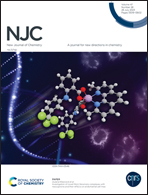Exploiting enzymes to optimize the pH-universal electrocatalytic ORR performance of biomass-based nanoporous carbons†
Abstract
To obtain high-performance biomass-based electrocatalysts, pore formation and heteroatom doping into biochar backbones are required. Because of the dense and ductile lignocellulosic structures of plant biomass, it is challenging for chemical additives to effectively infiltrate fabrics and tissues. Loosening these lignocellulosic frameworks holds the key to improved performance. In this work, hemicellulase and cellulase are used to act on staple forestry waste, leading to partial hydrolysis of lignocellulosic frameworks of biomass. The enzymatic modification gives rise to the enlargement of pore space in the biomass, which is made readily accessible to chemical additives and therefore results in increased efficiencies of nanopore formation and nitrogen doping. Consequently, biomass-based nanoporous carbons treated with enzymes show superior pH-universal electrocatalytic ORR performance compared to those without enzymatic processing. This work enriches the electrocatalysis field with biomass utilization methods and gives us fresh perspectives on nanoporous modulation.



 Please wait while we load your content...
Please wait while we load your content...